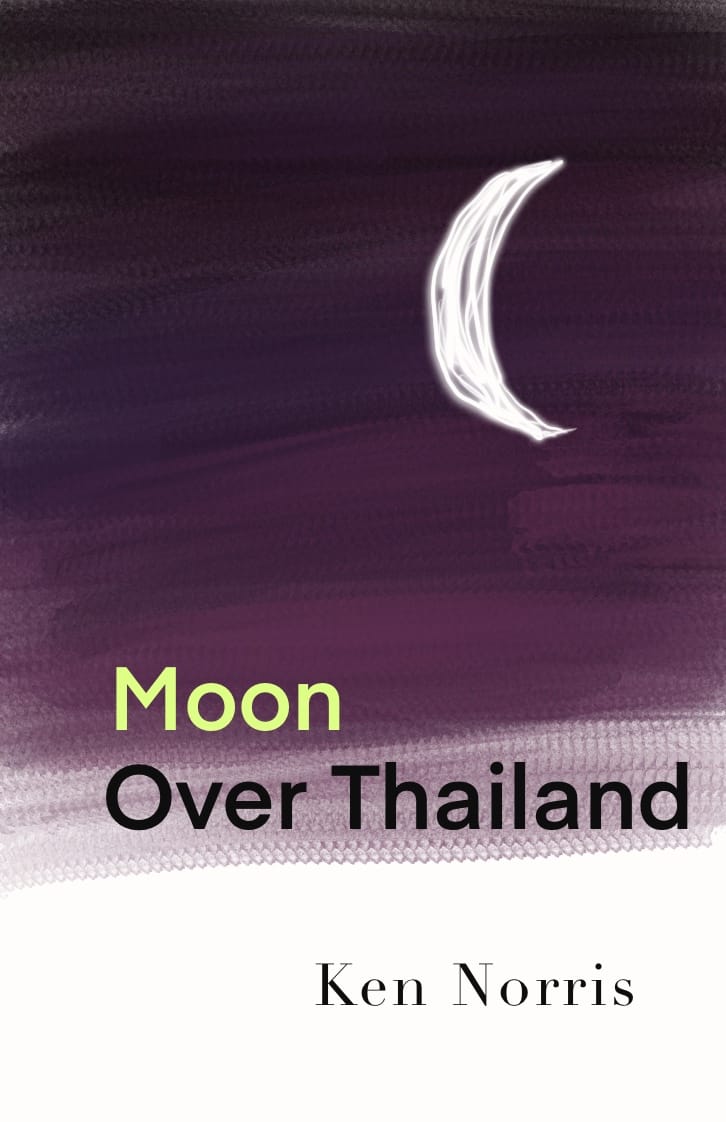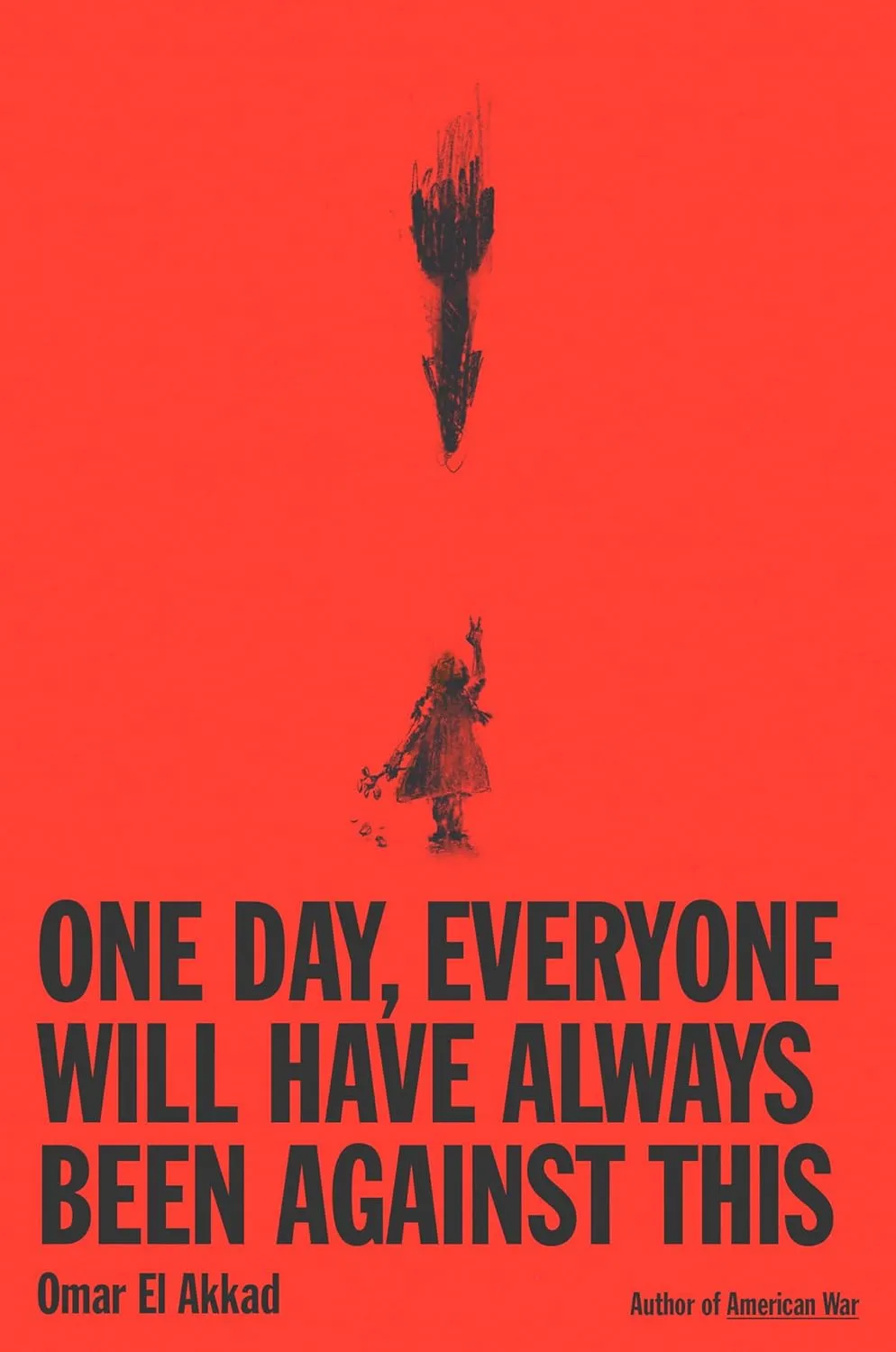Ken Norris, Moon Over Thailand
Wistful and world-weary and world-travelled, Norris’s voice echoes the spry blank verse of Irving Layton or R. G. Everson.

Ken Norris is a name I encountered recently reading a 2000-era interview between rob mclennan and Donato Mancini, someone mclennan mentioned having read way back. The interview being 25 years old, I gathered the author of Moon Over Thailand had been around a while, and I had likely even encountered some of his work in anthologies that would feature Erín Moure and Don Domanski.
Because I am uninitiated. It is far easier to acquire books than to read them. It is easier yet to say “read them” as if reading each individual book in one’s purview weren’t itself a euphemism for “reading through” them. To glean a comprehensive context, understanding notwithstanding.
Ken Norris figures among the Vehicule Poets, one or two I believe I’ve already met, uninitiated though I am, because Canadian writers tend to be humble and unassuming, I suppose, and the majority of them appear to have existed in some sort of “pre-Internet” era (which academic theorists estimate may have only ended one short-changed century ago). Sarcasm aside, I mean hailing from an era when people tended to have a running who’s who rolodex in their head when they went out.
This much is certain: Véhicule is French for vehicle. They clearly chose the French variant to signify that they were poets hailing from Montreal, the French-speaking métropole for expat writers and students of letters of yesteryear. And publisher James Hawes, who published my first-ever chapbook in 2023, has been on an inadvertent streak of publishing the Vehiculists since 2021 through his Turret House Press in Montreal. Ken Norris’s Hawaiian Sunset came first (itself a sequel to Hawaiian Sunrise published with rob mclennan’s above/ground press), then Artie Gold with George Bowering, followed by Endre György Farkas’s award-winning translation Poems of Love and Faith from the Hungarian.
Suffice it to say, there’s unforetold context I’m not privy to because I opened the book to read without further ado and dove into the first rabbit hole I encountered, which happened with the opening epigraph:
Spade scowled thoughtfully at the floor, asked, "What'd he do before he started not making a living writing poetry?"
-Dashiell Hammett, “Too Many Have Lived”
I hate to meander and yap too much, but for some reason, I mistook Dashiell Hammett for Alex Honnold.
I didn’t know who Dashiell Hammett was but after spending years reading books, after a while, writer names start to feel as familiar being entirely unknown to you as writers you have known and loved since the start, because writers namedrop other writers to such a point as to pervade your peripheral vision with likely and improbable names alike.
Perhaps I know him from something (I don’t), for lack of a better phrase. The scowling at the floor, however, I totally recognize. It’s an expression as old as time. And not making a living from poetry? That’s just called being a poet.
A detective quote to open the book as hearty as a bacon and bean breakfast.
The first poem has this idiom right off the bat, first stanza:
After all the wreckage
it's good to be here
drawing a bead on the morning.
And once again I am ensconced in reference material. What does it mean to draw a bead? Have I even lived? Wherefore have I not been drawing my beads? Perhaps I’ve drawn on them overabundantly. What is a bead? How does one draw it? This is some sort of firearm analogy? Who aims a gun into the rising sun? Some sort of heliocidal maniac? What does Ken Norris think about global warming?
I’m getting off track.
In the second stanza, he mentions the Hawaiian sunrise. Perhaps this is the threequel.
Then comes a poem about John, ostensibly McAuley. It is an ode, to be sure. But to recapitulate what I said in the beginning of this review, Norris has been around a long time. And judging by Hawes’ other publications, this is a historical favour as much as it is a fan service. This one poem alone says as much about the Canadian writerly experience as I’m sure the Artie Gold material I’ll be getting to in a later review soon enough will. Sometimes, in Canada, poets fly out west.
Wistful and world-weary and world-travelled, Norris’s voice echoes the spry blank verse of Irving Layton or R. G. Everson. Too academic for a Purdy comparison, probably. What do I know? I’m just a kid relative to all this, a big 32-year-old kid.
This is like the Canadian poetry chapbook equivalent of when Richard Siken showed up on Twitter randomly circa 2023, to everyone’s delight. It’s something you don’t shy away from in a state of unknowingness. Even the scantest amount of information is enough to appreciate the need to go deeper and sit a spell with this wondrous text to see what old chestnuts it has to offer and whether we can crack them.
It’s something perhaps James Hawes picked up from Stuart Ross. It’s either quickly become a publishing trend as of late or become evident as a tradition by its more recently emphasized long-standingness that publishers bring writers out of hiatus. Ross with Nelson Ball, Jim Smith, Michael Dennis, the list goes on. Maybe I’m mixing names up even. Hawes, by extension, with Ken Norris, arguably, too, not to mention his publishing of Artie Gold and George Bowering from Endre Farkas’s executorship of Artie’s papers, as per Ken Norris’s essay to open James Hawes’s publication of Twelve Cent Stars by Bowering and Gold circa 2024.
See the full circle becoming a centripetal ouroboros of literary playfulness all around us? It’s dizzying. And it’s so satisfying to be tangled up in a flurry of years, facts and people that you either know you know, or know you don’t know, and have it feel familiar and exciting and unknown all at once.
This is the prevailing feeling of reading Ken Norris now, in 2025. A little too late even, because I subscribed to James Hawes’s press after he published my first ever manuscript, then received the books and maybe flipped through one or two before getting distracted by life. As life happens. How mistaken I was to have been carried away by distraction and how grateful I am to bring myself out of it long enough to belatedly bask in the glow of this shining example of small press craftsmanship.
This is all before usurping the joy that is reaching page 20:
A quarter of my friends
are gone. The tide
comes sweeping in.
Pause for reflection. Take in the tide. Pretend you hear the ocean with me.
There is a recurring motif throughout these poems that Ken broaches every handful of pages as “the seven rooms” which bears an allegorical shadow. The seven rooms are, outwardly, a sort of nickname for the number of couplets in a sonnet, but so much more.
To me, it’s reminiscent of Yoko Tawada’s Celan reads Japanese, that, growing up in Japan reading Celan, she had assumed by the coincidence of seven window radicals appearing in one of his poems in translation that the nouns of that verse were thematically and metaphorically tied together, taking it for granted that Celan was fluent in Japanese. When she got older and settled in Germany, she realized her inadvertent assumption, and spends the rest of her essay letting on she never found any proof to the contrary that Paul wouldn’t have known Japanese, if I’m not misremembering, because it elucidated so much at such a foundational moment in her writing career. If it were merely coincidence, perhaps coincidences aren’t as mere as we make them out to be. And that’s 100% the vibe here with the beat of Ken Norris’s drum.
A Montrealer’s fondness for what I can’t help but mistake for the underlying tenets of the formerly fomenting Unitarian movement. A Northropian’s fondness for Blake. Maybe I’m reading too much into it. Maybe it’s not that deep. Or it is that deep and I’m distracting myself with misplaced pedantics.
What else is there for a young person who’s just read his first Ken Norris chap to express? The last word of the book, while the poet is still in Thailand, could be a double-entendre: Know peace.
Bibelotages Newsletter
Join the newsletter to receive the latest updates in your inbox.



